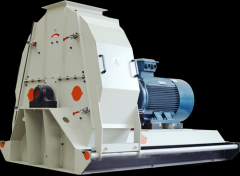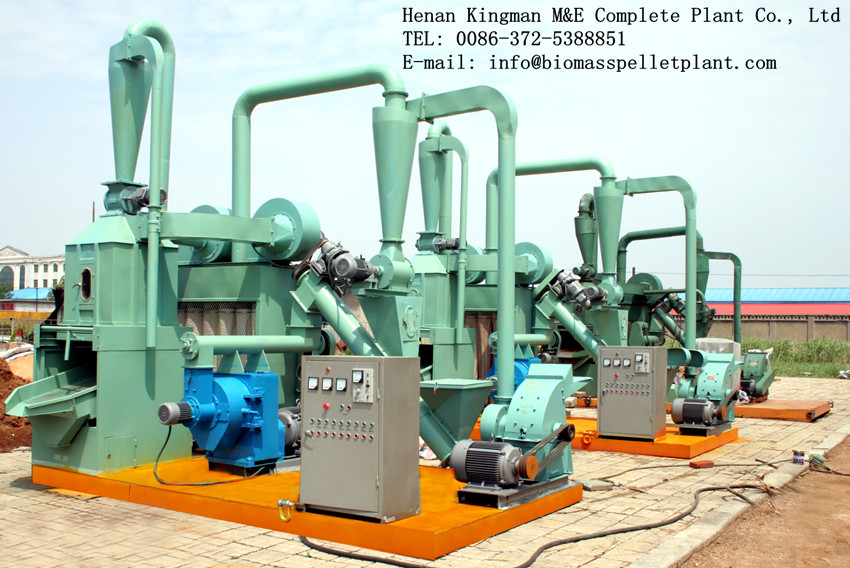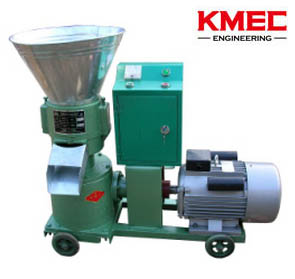Biomass pellet mill industry is badly in need of standard
Along with the emerging energy issues, prospect of applying of biomass pellet fuel is bound to be widely. Since 1980s, China imported a series of biomass densification equipment (biomass pellet mill, briquette machine), and has been researched for over 20 years. Law of renewable energy of people's Republic of China proposed that biomass energy should be clearly listed as the scope of renewable energy, to encourage the clean, high efficiency utilization of biomass fuel, encouraging the energy crops; Planning of development of renewable energy in the long term also published that the amount of application of biomass formation fuel will up to 500 million ton until 2020, that the biomass formation fuel has become a widely used high quality fuel. The production methods includes separated, small scale production way in the urban area and the large scale centralized biomass formation fuel processing plant which built in the conditioned area.

Recently, many scientific institutes and enterprisers have engaged in the research of biomass pellet fuel. There are several pellet plants begin to produce in groups which has shape a good statement of development. On the other hand, development of biomass fuel has come across many difficulties with their own shortcomings.
1. Lacking of related standard of biomass equipment and production
As a newly emerged industry, our country has no related standard of biomass solid formation technology, equipment and fuel. Due to lack of unified production and quality standard, various manufactures produce biomass solid fuel with different specification, physical characteristics and chemical features which directly affect the storage, transportation and applying of solid formation fuel. It seriously restricted the healthy development of biomass solid formation fuel industry.
2. No standard of emission of biomass fuel
On August 4th of 2014, the Beijing municipal government published the announcement of Delineation program of heavy pollution cut-off combustion zone in Beijing (trail), which listed various combustible waste and combustible biomass fuel, as well as other processed biomass solid fuel except the biomass gasification application into the heavy pollution fuel. The publishing of this file shocked the whole industry. Nanning city, Guangxi province has also published the related regulations (2014-03), which listed the biomass pellet fuel as the heavy air pollution fuel. Therefore, the industry reflect that the Nanning Environmental Protection Bureau has promised to accept the related suggestion, to revise the regulation of listed biomass formation fuel as the heavy pollution fuel, developing the heating system by burning biomass solid fuel.
As for the above situation, the related government could control the development of biomass fuel through regulation, to remove part of the unqualified energy, improving the local demand for fuel, to ensure the efficient control of environment.
3. Low level of densification technology
During recent years, domestic biomass formation fuel technology has improved greatly. Comparing with the foreign country, the most outstanding question is energy consumption, and the most obvious question is sawdust pellet mill, biomass pellet mill and biomass briquette machine. So changing the method of equipment energy consumption is an key research direction in the future. Therefore, regulating the related standard of biomass densification equipment is the insurances of maintain the healthy and continuous development of the whole biomass energy industry.
----------------------------------------------------------------------------------------------------------------------------------------------------
News
- Small Pellet Machine Manufacturer-Kingman
- Application of Wood Pellets and Use of Biomass Pellets
- From Fossil Fuel into Biomass Pellet Fuel
- Biomass Pellet Making Machines Market
- Applying of pellet stoves for home use
- Highland pellets to build $130 million facility in arkansas
- How to deal with the blocked hammer mill
- How to Make Wood Pellets with Sawdust
- The government policy promotes the development of biomass fuel
- Market analysis of biomass pellet fuel
- Strategic positioning of renewable energy
- Biomass energy has pass through the pre assessment
- The key point of deep processing of biomass pellet
- Harbin is promoting the development of biomass machinery
- The development of biomass formation technology I
- The development of biomass formation technology II
- Biomass energy industry is now going full tilt in 2015
- Rapid increasing demand of sawdust pellet on the market
- Pellet fuel market in EU
- Chinese Biomass Energy Conference held in Beijing
- Future market development of straw pellet mill
- Peanut Shell Pellet Mill Makes High Quality Pellets
- The utilization of straw is only 5%, biomass energy needs our attention!
- Corn straw pellet machine relieves the tight supply of fuel energy
- Reasons for loose or not forming of biomass pellet mill





